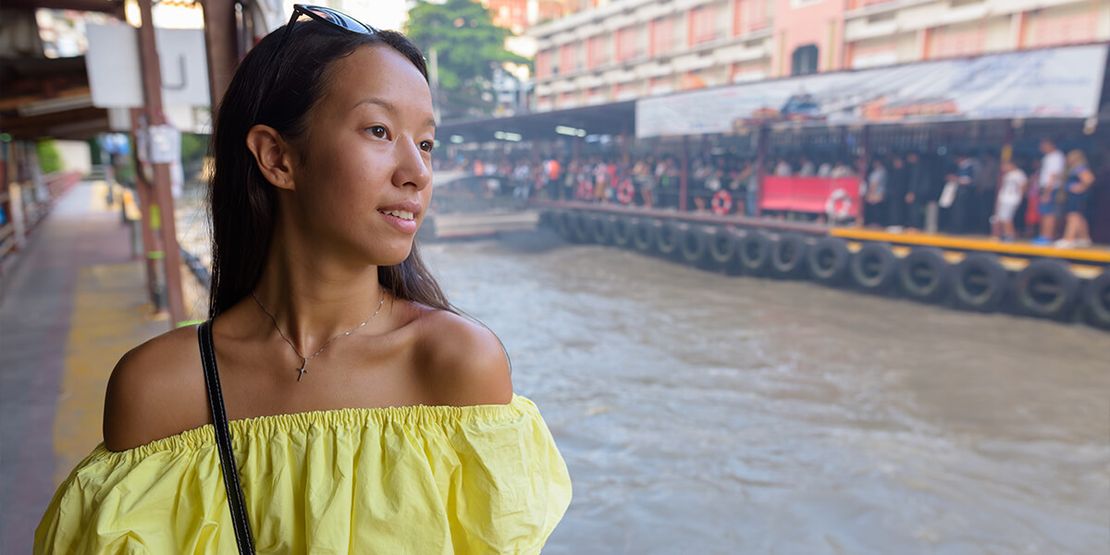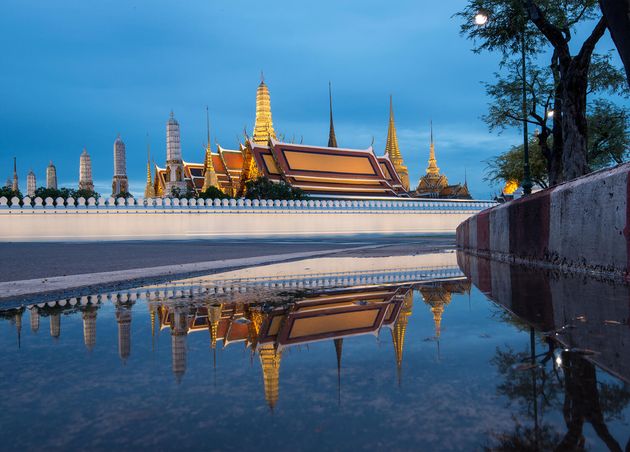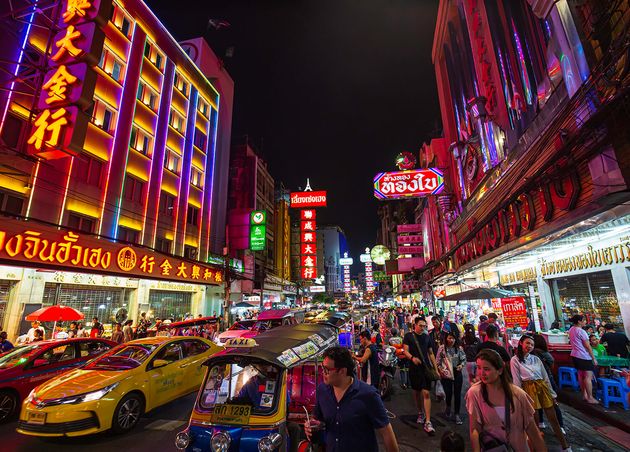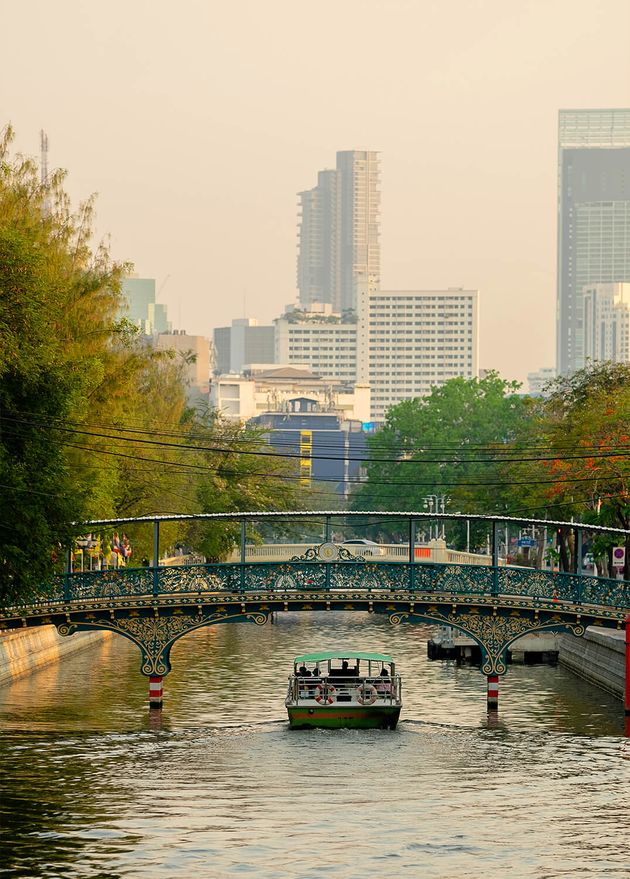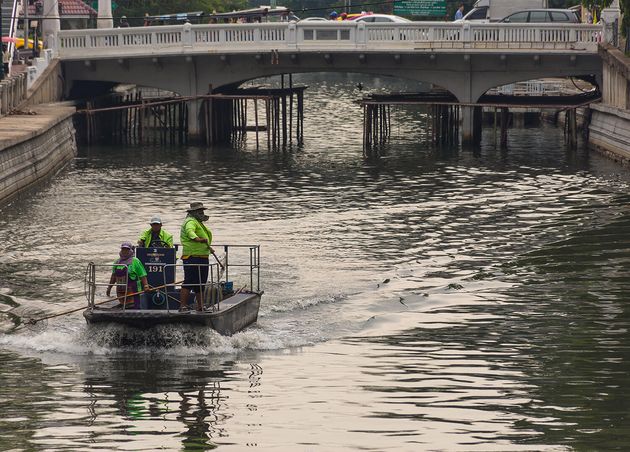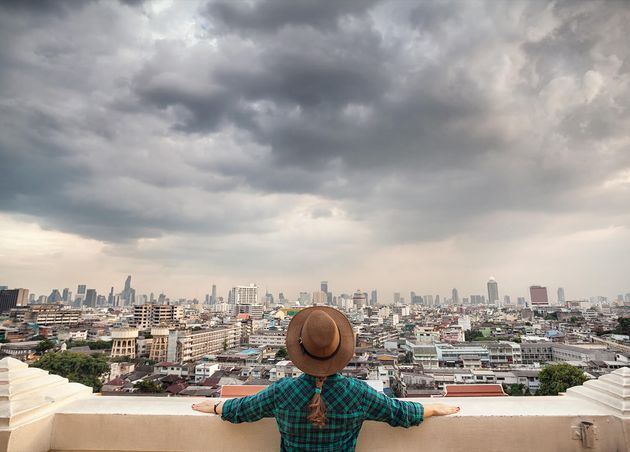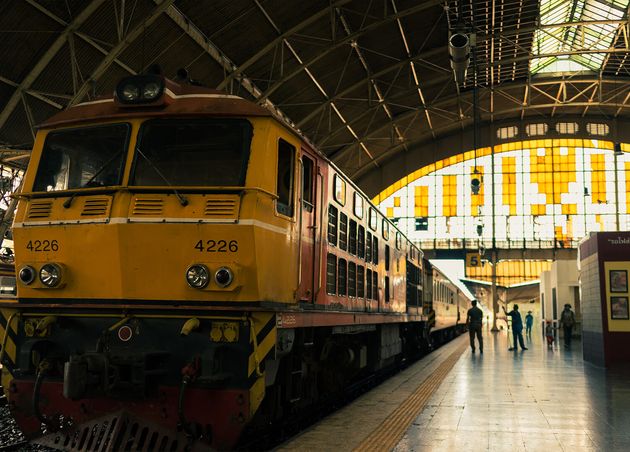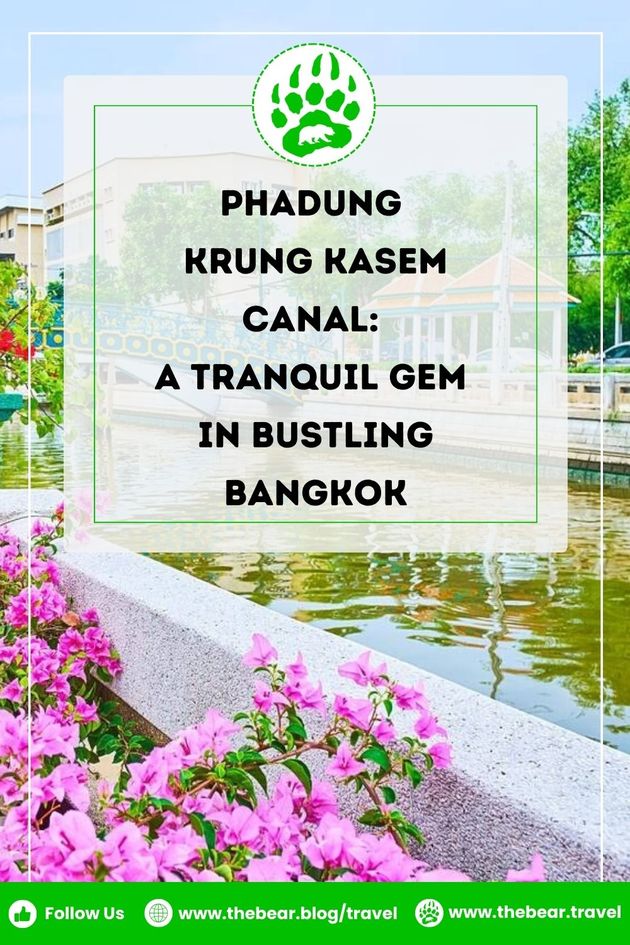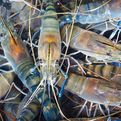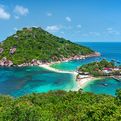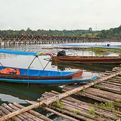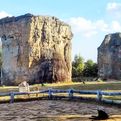Phadung Krung Kasem Canal: A Tranquil Gem in Bustling Bangkok
Nestled just off the bustling streets of Krung Thep Maha Nakhon (Bangkok), within its sultry and somewhat muddy environs, a web of canals has been meticulously excavated, preserved, and continuously maintained since the 18th Century. While tuk-tuks and traffic jams may be the iconic images of the capital, its waterways were once the city's lifeblood, especially during the 19th Century. In contemporary times, many canals have been transformed and paved to create road space, but a vast network of waterways still weaves through the city.
Exploring Bangkok's Klongs (canals) provides a remarkable opportunity to immerse oneself in the heart of this tropical metropolis. Despite their occasional pungent and dusty nature, these canals serve as enduring cultural and historical monuments, preserving the city's rich heritage.
Given the rising sea levels and the city's foundation sinking at an average rate of three inches per year, the canals are poised to become increasingly crucial in influencing the future development of Krung Thep Maha Nakhon (Bangkok).
Among them, one of the most central and historically significant canals to scour is the Khlong Phadung Krung Kasem, one of the modern canals around the Grand Palace. Today, we would like to take you on a tour around this fantastic canal.
A unique aspect of the Khlong Phadung Krung Kasem route is that it can be attached to the mass transit system according to the design of "Wheel Rails," with connections to buses throughout the route, containing sanctuaries and other trains.
A Fascinating History of Phadung Krung Kasem Canal
The Khlong Phadung Krung Kasem is a significant canal in Thailand's history, its discovery dating back to 1851 during the reign of King Rama IV. It commences from the canal's mouth at the Chao Phraya River in the Thewet area, traverses the Hua Lamphong district, and reaches the other side of the river, passing through the Wat Kaew Chan Fa area, Si Phraya area. The canal spans about 5 kilometers, with excavation work completed in 1852.
The primary objective behind excavating the Phadung Krung Kasem Canal was to expand the urban area of Krung Thep Maha Nakhon (Bangkok) to welcome trade with numerous nations and support the flourishing cultural development along the canal. This canal served as a crucial water route for locals and was vital for transporting goods from the Chao Phraya River into the Phra Nakhon District.
Following the opening of the Phadung Krung Kasem Canal, a network of roads and numerous essential economic, political, and cultural landmarks were established along the canal's banks, including:
- Yaowarat Road
- Bobae Market
- Saphan Khao Market
- MahaNak Market
- Nang Loeng Market
- Thewet Market
- Thepsiri Temple
- Nathrawat Ratchaworawihan
- Makutkasatriyaram Ratchaworawihan Temple
- The House of Representatives Government
Discovering A Peaceful Waterway in Bangkok
Khlong Phadung Krung Kasem is a metropolitan waterway that offers fully electric boat services and connects to central public transport systems such as buses, electric trains, and Chao Phraya Express Boats. It is the first city in the ASEAN region to improve travel options with public transport boats.
More convenient with a distance of 5 kilometers in Khlong Phadung Krung Kasem, there is a marine route from the middle of Krung Thep Maha Nakhon (Bangkok) through tourist attractions and significant places out to the Chao Phraya River.
It begins from Bangkok (Hua Lamphong) Railway Station to Thewarat Market Pier, upholding crucial government offices, commercial areas, and markets such as Bobae Market, MahaNak Market, and Thewet Market. Traveling around the line takes no more than 30 minutes, benefiting a broad range of users, including students, workers, and travelers.
Highlights of this route are the electric power boats that use clean energy to operate rather than diesel boats in addition to being free from dust and smoke and not formulating pollution. At the same time, sailing has not caused sound pollution because of the low sound engine.
Navigating Eco-Friendly Boats in Khlong Phadung Krung Kasem
Passenger boats along the Khlong Phadung Krung Kasem route, recognized as Thailand's first "green route," commenced operations on November 27, 2020, with electric energy as their power source.
Introducing electric boats along the Khlong Phadung Krung Kasem route represents a significant environmental initiative, as they cost only a fraction of what diesel-powered boats would. When fully charged, these boats can operate for up to 4 hours. Initially, the upfront cost of the electric boats may be high due to the expense of boat batteries. However, as technology advances and transportation evolves, the long-term outlook anticipates reduced battery costs.
These electric boats are constructed from fiberglass material and can accommodate up to at least 30 passengers per boat, including provisions for one passenger using a wheelchair. The seating and aisles are designed for comfort, and the boat's hull size is customized to navigate the unique features of Khlong Phadung Krung Kasem, including several bridges. The low bridge height lets the boat execute 360-degree turns, enhancing its maneuverability.
Each boat has a roof fitted with 12 solar panels to generate electricity for the vessel's lighting system, providing a backup power source. The boats maintain a sailing speed of 10-15 kilometers per hour and can execute full 360-degree turns, reducing the risk of reversing in the canal. Additionally, the boats are equipped with GPS for tracking their position and CCTV for public service monitoring.
On average, Khlong Phadung Krung Kasem passenger boats make approximately 39 trips, departing every 15 minutes between 6:00 and 19:00. During the first six months of operation, the service was offered for free, after which a modest fare was introduced, not exceeding 10 baht for the entire route.
The total length of the Khlong Phadung Krung Kasem boat route is about 5 kilometers. Traveling along the line takes no more than 30 minutes, so it is helpful for a wide range of users, including students, workers, and tourists.
Why Visit Phadung Krung Kasem Canal in Bangkok?
Khlong Phadung Krung Kasem offers a unique and picturesque on-water experience with a nostalgic charm. If you find yourself in the area or have an hour to spare before catching a train, take a leisurely walk along the canal. You can also plan a morning outing, combining a stroll along the Khlong with a visit to the Bo Bae wholesale market through which the canal passes.
Krung Thep Maha Nakhon (Bangkok) plans to develop both sides of Khlong Phadung Krung Kasem further, including expanding the pedestrian infrastructure, improving lighting, renovating jetties and dams, enhancing signage along the route, maintaining cleanliness, monitoring water quality, and opening tourist spots. The city also organizes various tourism promotion events in this area, making it an even more delightful experience for visitors.
There is hope to create a bicycle path for tourism along Khlong Phadung Krung Kasem as part of its revitalization efforts, reviving the canal's historical significance and living up to its name, which means "upholding the country to be strong and prosperous." With ramps for wheelchair users and people with disabilities, the new canal-side handrail has been designed to be more user-friendly, providing additional space for pedestrians.
The eco-friendly boat route along Khlong Phadung Krung Kasem takes you through the heart of Phra Nakhon. Starting from Hua Lamphong Railway Station and traveling to Thewarat Market Pier before joining the Chao Phraya River, you'll pass numerous historic landmarks, commercial areas, and renowned markets from the past.
While Phadung Krung Kasem Canal may not be a famous tourist attraction, exploring it on foot or by boat offers an authentic experience of Bangkok, revealing the city's true character. If you have the time and the opportunity, don't hesitate to visit and experience its unique charm.
How to Visit Phadung Krung Kasem Canal in Bangkok?
From Hua Lamphong MRT station, walk past the Neo-Italian railway terminal station, and you will enter an off-white period bridge overlooking Khlong Phadung Krung Kasem. And it's a 9-minute walk from Hua Lamphong.
Using electric passenger boats to renew the use of oil, in addition to lowering pollution, similarly satisfies the canal development approaches and the improvement of lifestyles for the new generation to be aware of, helping to save and protect the environment.
Maps & More information
Khlong Phadung Krung Kasem represents a significant step in the development of Krung Thep Maha Nakhon (Bangkok) with a vision to harmonize urban growth with the natural environment. This initiative aims to enhance the city's atmosphere and improve the quality of life for its residents. It promotes sustainable, fast, and eco-friendly transportation while maintaining a clean, scenic canal-side landscape. Introducing electric boats provides an exciting and environmentally conscious travel option that adds to the city's charm.
|
Entrance Fee |
There is no admission fee. |
|
Business Address |
Luk Luang Rd. Dusit, Dusit, Bangkok 10300, Thailand
|
|
Business Hours |
24 Hours Open | Monday to Sunday |
|
GPS |
13.7506933, 100.5085207 |
The Bear Team
We, The Bear Team, are a united group of digital experts and adventurers. Combining technical skills with creative flair, we deliver informative, valuable, up-to-date content. Whether seeking travel inspiration or innovative solutions, we're your go-to for fun, authentic, impactful, and timeless experiences.
The Bear Travel | Experience like a Local
A fast-growing Thailand Travel Blog written by Expats and Thais since 2017. We will share our experiences and ideas from an insider point of view for you to create your own unique Thailand experience.
For the latest news and events about The Bear Travel, follow us on Facebook, Instagram, Twitter, Pinterest, or YouTube.
For any issues, concerns, or queries, don’t hesitate to CONTACT us.
Recommended for you
Global Shrimp Industry: Knowing the Key Players and Dynamics
Riley Sinclair (Digital Aqua Bear)
Travel to Koh Tao Guide: Everything You Need to Know
Dr. Theodore (Professor Bear)
Sangkhlaburi: The Complete Boat Tours Adventure Guide
Dr. Theodore (Professor Bear)


